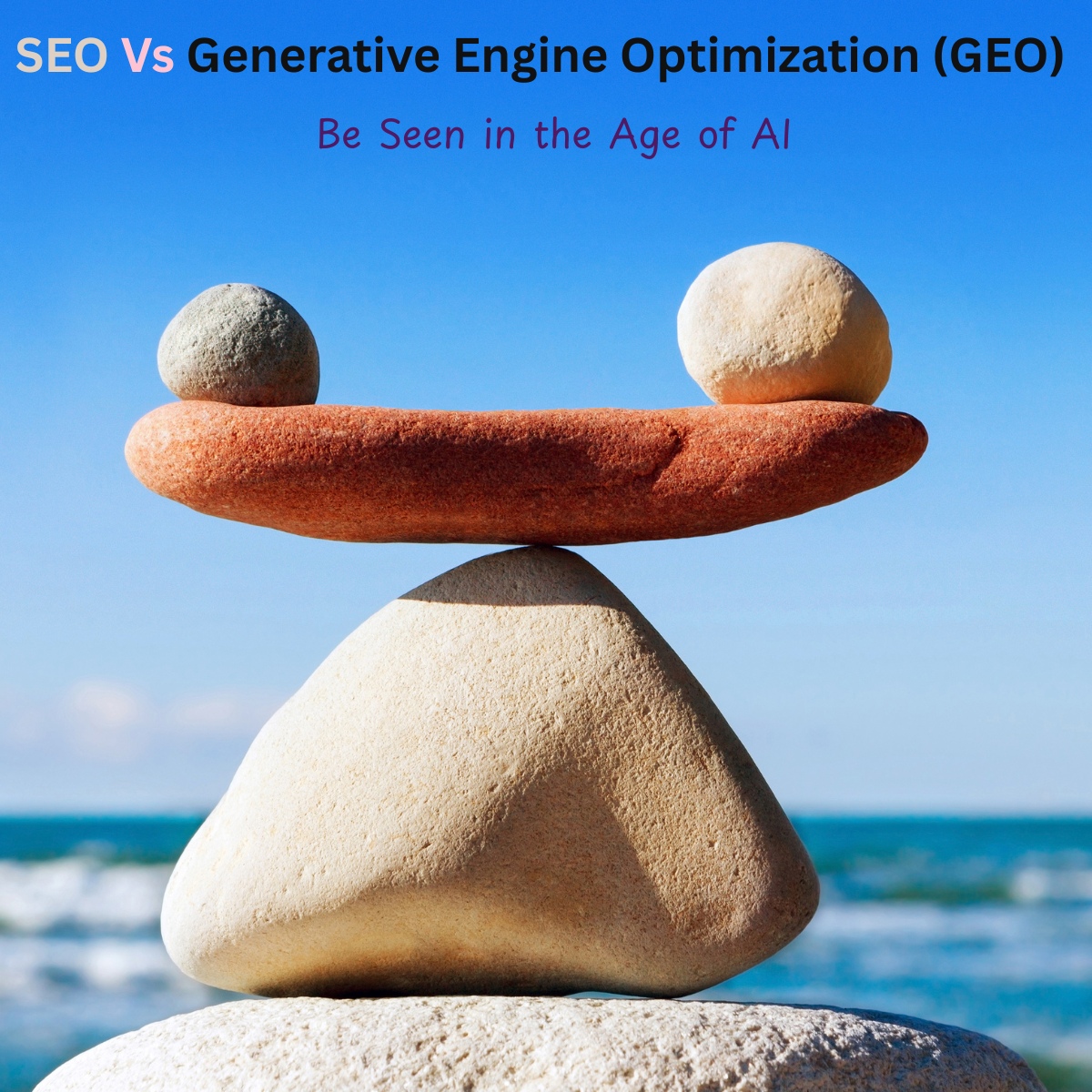Posted At: Aug 12, 2025 - 316 Views

Generative Engine Optimization (GEO): The New Frontier Beyond SEO
Introduction: Welcome to the Post-Search Era
Search is evolving — and fast. With the rise of generative AI engines like ChatGPT, Google Gemini, and Perplexity AI, users are no longer just searching for links — they’re asking questions and expecting direct answers. This shift is giving rise to a new discipline: Generative Engine Optimization (GEO).
Much like how Search Engine Optimization (SEO) transformed digital marketing in the 2000s, GEO is quickly becoming essential for brands, publishers, and content creators who want to stay visible in the age of AI-powered answers.
What Is Generative Engine Optimization (GEO)?
Generative Engine Optimization (GEO) is the practice of optimizing content so that it is accurately represented, surfaced, and cited by generative AI engines in their responses.
While SEO focuses on ranking in traditional search results, GEO focuses on becoming part of the content outputs of AI models that generate answers based on vast corpuses of data.
GEO Is About:
- Being referenced in AI-generated answers
- Structuring content so LLMs can ingest and interpret it correctly
- Establishing topical authority and trustworthiness
- Optimizing for conversational and intent-driven queries
Why GEO Matters Now
Generative engines are rapidly changing how people interact with information:
- 🔍 60% of Gen Z prefer TikTok or ChatGPT over Google for queries
- 🤖 AI assistants are embedded in search (e.g., Google SGE, Bing Copilot)
- 📉 Organic search traffic is declining for many websites
If your content isn't optimized for how AI interprets, selects, and cites sources, you risk being invisible in this new landscape — even if your SEO is solid.
How Generative Engines Pull Information
To understand GEO, it's important to know how generative engines gather and use data:
- Training on public web content (e.g., forums, blogs, product pages, news)
- Retrieving from live sources via browsing or APIs (RAG: Retrieval-Augmented Generation)
- Selecting high-authority, clear, well-structured sources
- Synthesizing natural-language responses that cite or paraphrase these sources
Key Principles of Generative Engine Optimization
Here’s how to start optimizing your content for the generative web:
1. Clarity Over Clickbait
Generative engines don’t “click.” They read and understand. Write in a clear, factual, and structured way:
- Use simple language and active voice
- Answer common questions directly (FAQ-style)
- Keep paragraphs short and focused
2. Structured, Semantic Content
Well-organized content is easier for LLMs to parse. Use:
- Headings (H1-H3 hierarchy)
- Bullet points and numbered lists
- Tables and summaries
Consider schema markup and rich snippets to make content machine-readable.
3. Topical Authority
AI models lean toward citing trusted voices. Establish yourself as an authority:
- Cover topics in depth (cornerstone content)
- Use internal linking to build thematic clusters
- Get referenced or linked to by other reputable sites
4. Fact-Based and Sourceable
AI prioritizes verifiable information. Always:
- Cite your own sources
- Provide statistics with original links
- Avoid exaggeration or unsupported claims
5. Conversational Relevance
Optimize for natural language queries, not just keywords:
- Use question-based headings: “What is X?”, “How does Y work?”
- Write as if you’re answering someone in a chat
- Incorporate voice search phrases and long-tail queries
6. Multimodal Content
AI engines like ChatGPT and Gemini can understand images, tables, and even charts. Consider:
- Infographics with alt-text
- Descriptive captions
- Diagrams with explanatory labels
GEO vs SEO: What's the Difference?
Feature | SEO | GEO |
Target | Search engines (Google, Bing) | Generative AI engines (ChatGPT, Gemini) |
Goal | Rank on SERPs | Be referenced in AI-generated content |
Optimization | Keywords, backlinks, meta tags | Semantic clarity, structure, authority |
User Experience | Click-through & dwell time | Factual accuracy & language clarity |
Measurement | Search rankings, organic traffic | AI citation frequency, response inclusion |
Tools and Metrics for GEO
While GEO is still a new frontier, early tools and strategies are emerging:
- ✅ AI content audit tools (e.g., Originality.ai, Surfer SEO)
- 🔎 Prompt testing (ask ChatGPT questions to see if your content appears)
- 📈 Brand mention tracking in AI outputs
- 📊 Citations in SGE/Bing/Perplexity responses
In the near future, we’ll likely see GEO dashboards that track how often your content is used or cited in AI outputs — just as we currently track SERP rankings.
What Content Works Best for GEO?
- Detailed how-to guides
- Expert roundups and FAQ pages
- Original research and data reports
- Niche glossaries and term definitions
- Long-form thought leadership
These formats give AI engines structured, high-value information to surface.
Prepare Now or Fall Behind
Just as businesses that embraced SEO early gained massive advantages, those who adopt GEO today will own visibility in the AI-powered future of search and discovery.
This isn't about gaming the system — it’s about crafting trustworthy, structured, and valuable content that LLMs will want to cite and users will want to read.
